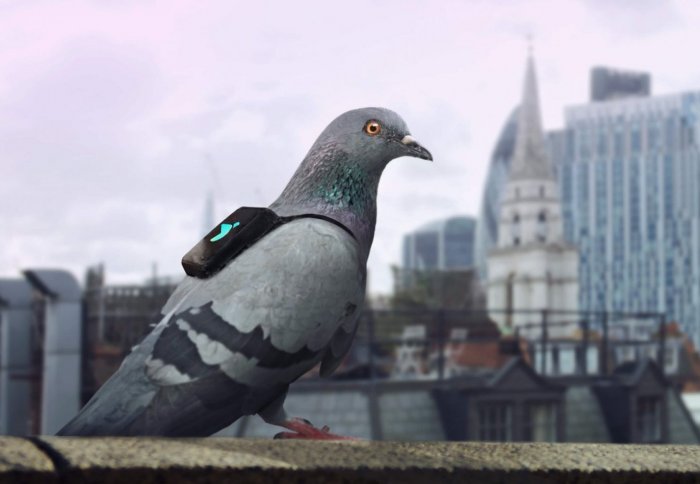
Image: DigitasLBI

Pigeons have been road testing wearable sensors that will provide air pollution data for Imperial research.
Air pollution is a serious and growing problem across the UK, with parts of London breaching annual air pollution limits in the first week of 2016. Oxford Street broke the limit for nitrogen dioxide, a toxic gas produced by diesel vehicles that has been linked to respiratory and heart problems, a thousand times in 2015.
Personal monitors have the potential to help us understand the city’s air pollution in great detail, from where the pollution hotspots are to what urban designs reduce exposure.
– Dr Audrey de Nazelle
This week, technology company Plume Labs and DigitasLBi have released a flock of pigeons in London carrying tiny backpack air pollution monitors. The lightweight sensors are stitched onto small fabric vests that fit comfortably on the pigeons and measure levels of nitrogen dioxide and ozone, the main gases behind harmful urban air pollution.
The Pigeon Air Patrol is flying for just three days, but the team behind it hope it will raise awareness and support for a bigger project in collaboration with researchers at Imperial College London, called E-Plume. This week, members of the public can track the pigeons via the Pigeon Air Patrol website, and get the pollution readings from their monitors by tweeting @PigeonAir.
Later this year, E-Plume aims to follow in the pigeons’ footsteps by recruiting an army of 100 human Londoners using wearable air pollution monitors. Imperial researchers will analyse and interpret the resulting data.
“Personal monitors have the potential to help us understand the city’s air pollution in great detail, from where the pollution hotspots are to what urban designs reduce exposure,” said lead researcher Dr Audrey de Nazelle from the Centre for Environmental Policy at Imperial. “But they also have a more personal side. We hope people will think more about their own contribution and exposure to air pollution, and what the health implications of their behaviour are.”
Dr de Nazelle and her team will work with the data and also with the app, finding ways to encourage people to engage with air pollution issues. “There are lots of technologies to reduce pollution, such as those that reduce car emissions, but technology can only go so far,” she said.
“Personalised technology like the sensors and app can help people change their attitude and be more healthy and sustainable. It also means they are more likely to support policies that tackle air pollution, from urban planning to policies that target behaviour.”
Article text (excluding photos or graphics) available under an Attribution-NonCommercial-ShareAlike Creative Commons license.
Photos and graphics subject to third party copyright used with permission or © Imperial College London.
Reporter
Hayley Dunning
Communications Division

Contact details
Tel: +44 (0)20 7594 2412
Email: h.dunning@imperial.ac.uk
Show all stories by this author
Leave a comment
Your comment may be published, displaying your name as you provide it, unless you request otherwise. Your contact details will never be published.




Comments
Comments are loading...